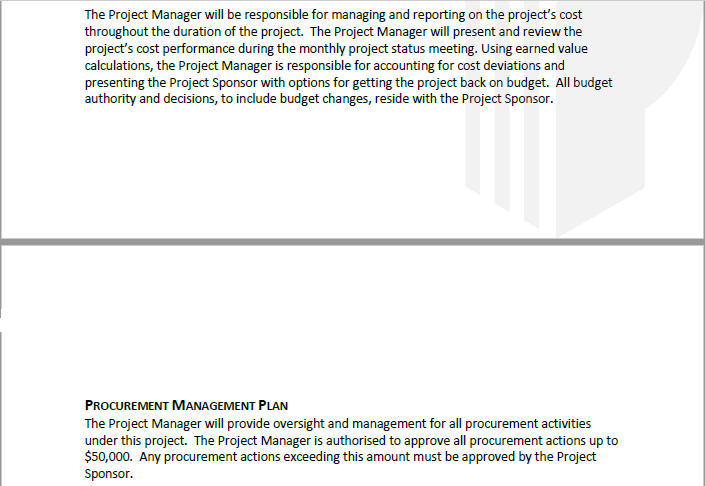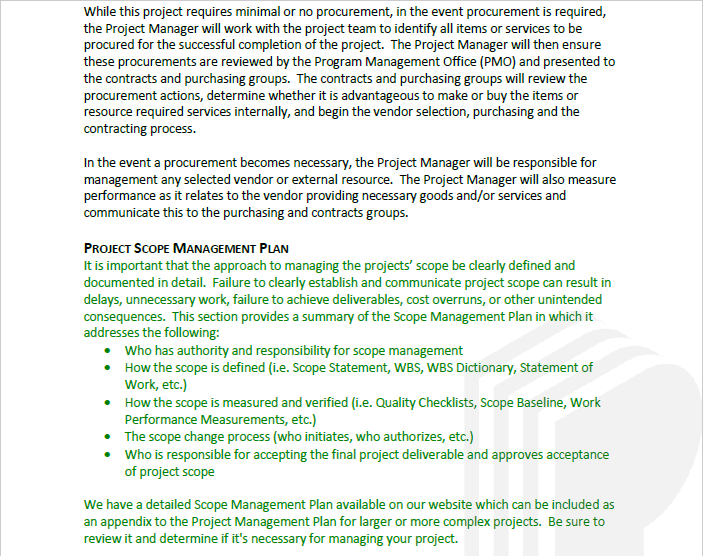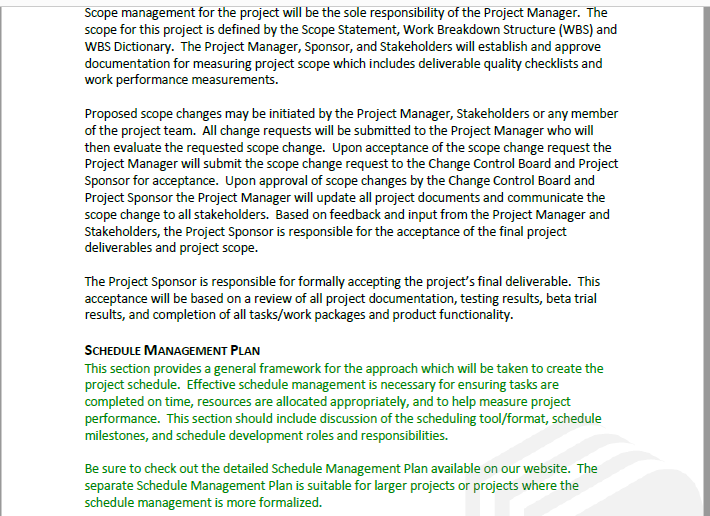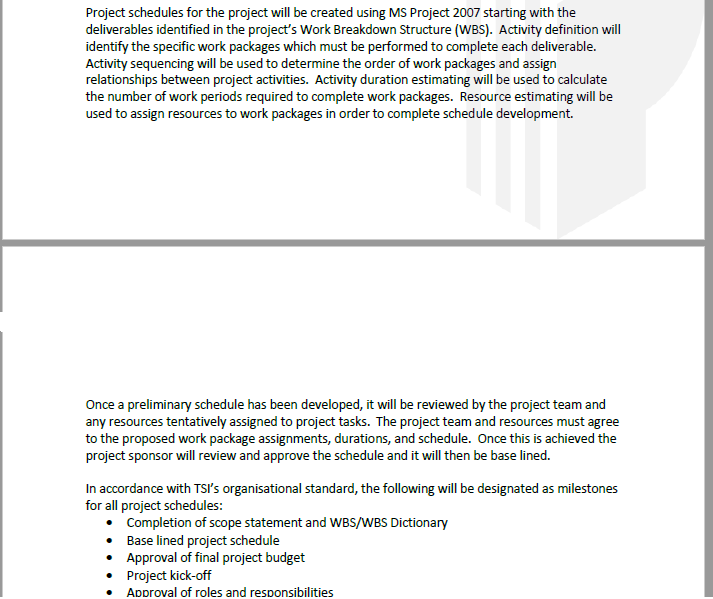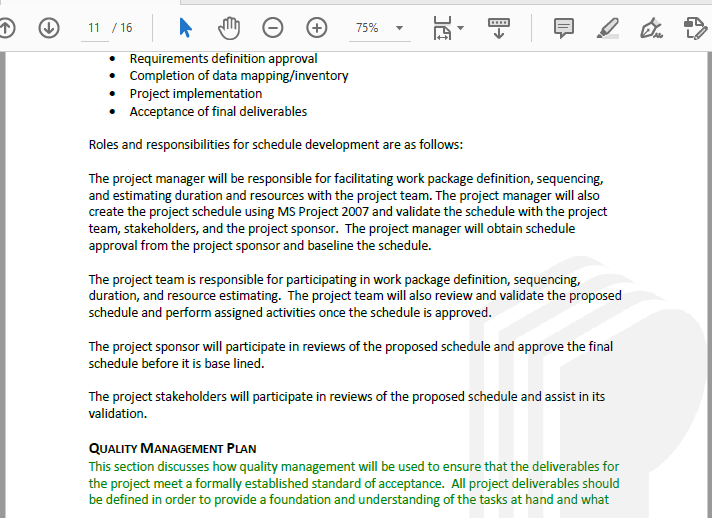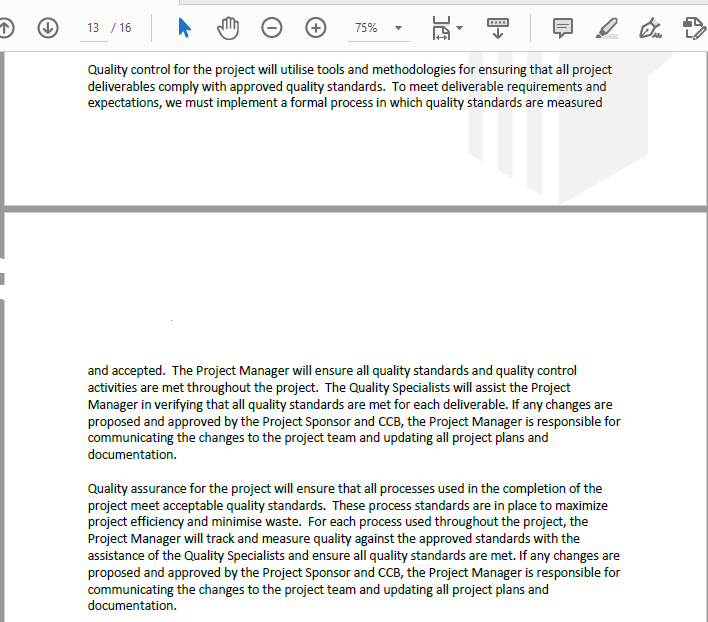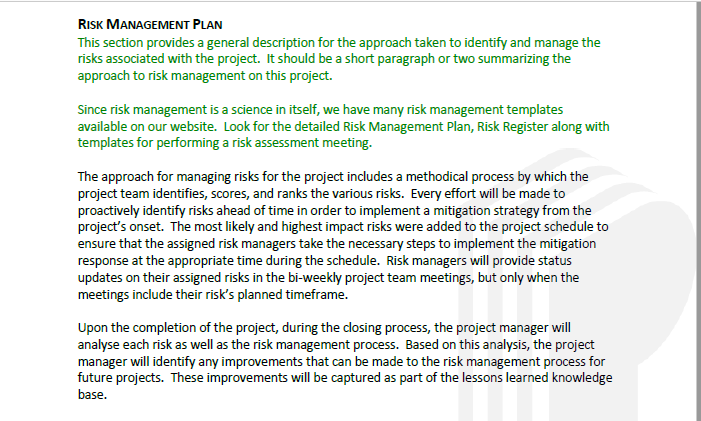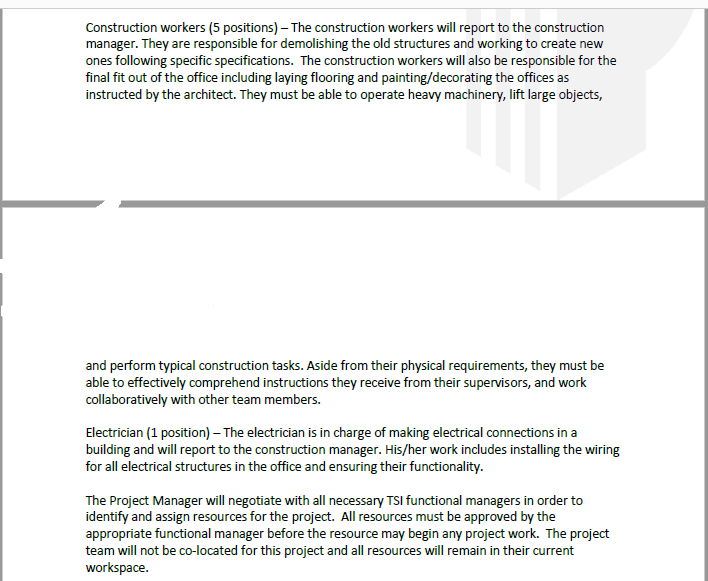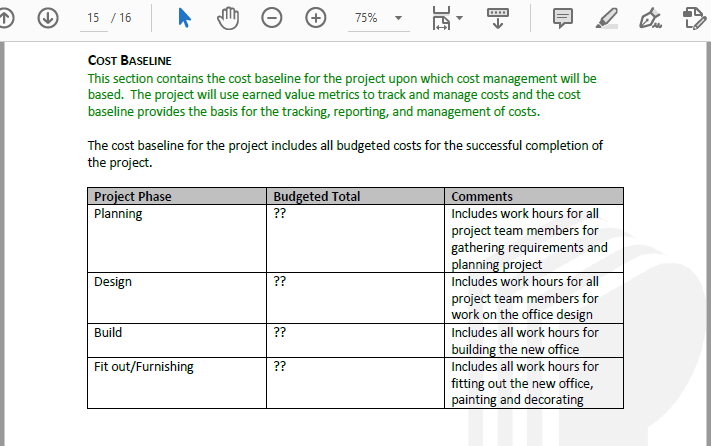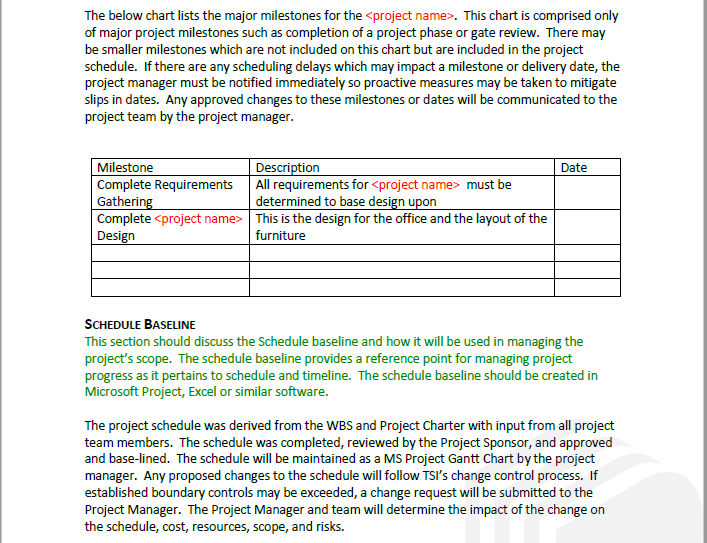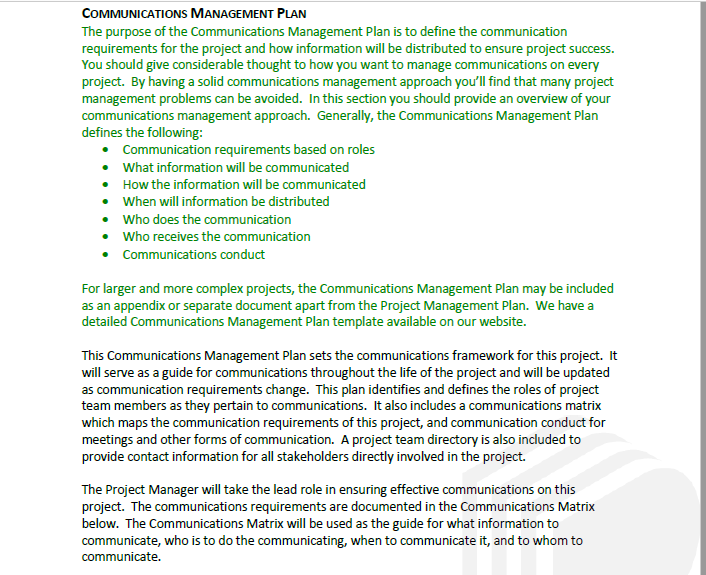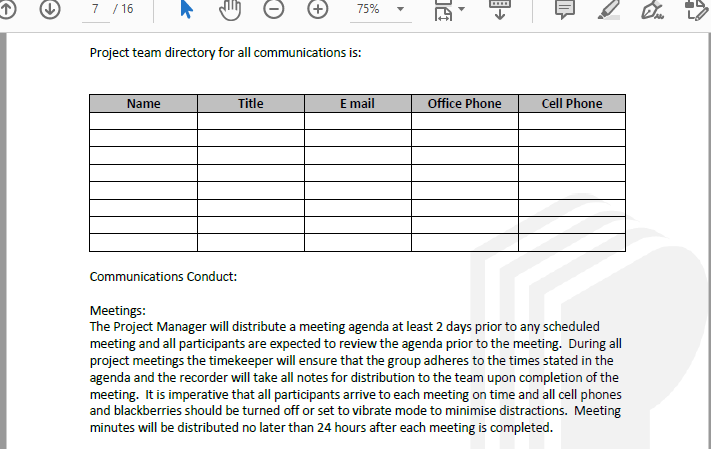Assessment Task 1 - Case Study
Instructions to assessment task:
Task 1.1 may be completed in groups. If undertaking this work in a group, all contributions must be clearly acknowledged and all students in the group will need to be able to explain all details of the submission.
Read the scenario below and answer a series of questions. Alternatively, you are able to use your own project provided prior approval has been given by your trainer/assessor at Albright Institute.
You work for a legal firm in Melbourne called Baldrick, Black, Adder & Partners. They are a very old Melbourne law firm and have been in operation since 1923. They have offices at 232 Collins St but the building is quite old and in need of renovation. Baldrick, Black, Adder & Partners decide that it is cheaper for them to renovate and modernise their office rather than move to new premises and they put you in charge of planning and managing the project to renovate the office.
The space that is being used is quite disorganised and crowded with very little storage for client files. Staff desks are very close together with little privacy, senior partners have offices but junior partners and other staff do not. It is uncomfortable with old desks and chairs that do not meet modern OHS requirements and there have been a lot of complaints from both staff and clients. The partners fear they are losing money with clients leaving them for other law firms.
You have been asked by management to lead a project team to redesign this office space, to resolve the complaints from staff and to ensure that the design and new layout is more ergonomic, comfortable and a better designed space to work from.
Task 1.1 - Group activity
Create Project Management Plan using the provided template. This project management plan will consist of all the components and instructions you will need to be able to undertake your project. The project management plan will consist of the following sections:
a. Reason for the project (including the project objectives)
b. Project sponsor name and details for sign off
c. How the project will be managed, including plans for providing staff support.
d. Project quality requirements and plan
e. Who the stakeholders are for the project and what power/authority they may have in the project.
f. The scope of the project and the plan for managing this scope including scope change processes.
g. This document will also include your
i. project schedule
ii. communication plans including your stakeholder management plans,
iii. project deliverables and milestones
iv. Project assumptions and constraints
v. project budget
vi. project resource requirements
vii. expected project risks and issues and how these will be managed.
Task 1.2. - Individual activity
Answer the following questions.
h. For maximum efficiency you will need to ensure all your team members understand their responsibilities and positions. What action will you take to guarantee their understanding? Explain.
i. Some furniture that is being reused is heavy and difficult to move. What support or training will you provide for your workers with to ensure they remain safe and that all WHS requirements are met?
j. What outcomes do you expect to achieve with the completion of this project? Give explanations.
k. The office manager who has assigned you to the project has asked you to keep strict records of the project costs and all financial records for the project. What financial records do you need to keep and how do you check them for accuracy?
l. One of your project team is unhappy that they are going to be asked to help move the furniture at the start of the project to allow for the refurbishment to take place. How might you resolve this problem? (give examples)
m. You are nearing the end of your project, the renovation and refurbishment
Email: All emails pertaining to the project should be professional, free of errors, and provide brief communication. Email should be distributed to the correct project participants in accordance with the communication matrix above based on its content. All attachments should be in one of the organisation's standard software suite programs and adhere to established company formats. If the email is to bring an issue forward then it should discuss what the issue is, provide a brief background on the issue, and provide a recommendation to correct the issue. The Project Manager should be included on any email pertaining to the project. Informal Communications: While informal communication is a part of every project and is necessary for successful project completion, any issues, concerns, or updates that arise from informal discussion between team members must be communicated to the Project Manager so the appropriate action may be taken. COST MANAGEMENT PLAN The Cost Management Plan clearly defines how the costs on a project will be managed throughout the project's lifecycle. It sets the format and standards by which the project costs are measured, reported, and controlled. Working within the cost management guidelines is imperative for all project team members to ensure successful completion of the project. These guidelines may include which level of the WBS cost accounts will be created in and the establishment of acceptable variances. The Cost Management Plan: Identifies who is responsible for managing costs Identifies who has the authority to approve changes to the project or its budget How cost performance is quantitatively measured and reported upon Report formats, frequency and to whom they are presented For complex or large projects the Cost Management Plan may be included as an appendix to the Project Management Plan or as a separate, stand-alone document. We have a detailed Cost Management Plan template available on our website.The Project Manager will be responsible for managing and reporting on the project's cost throughout the duration of the project. The Project Manager will present and review the project's cost performance during the monthly project status meeting. Using earned value calculations, the Project Manager is responsible for accounting for cost deviations and presenting the Project Sponsor with options for getting the project back on budget. All budget authority and decisions, to include budget changes, reside with the Project Sponsor. PROCUREMENT MANAGEMENT PLAN The Project Manager will provide oversight and management for all procurement activities under this project. The Project Manager is authorised to approve all procurement actions up to $50,000. Any procurement actions exceeding this amount must be approved by the Project Sponsor.While this project requires minimal or no procurement, in the event procurement is required, the Project Manager will work with the project team to identify all items or services to be procured for the successful completion of the project. The Project Manager will then ensure these procurements are reviewed by the Program Management Office (PMO) and presented to the contracts and purchasing groups. The contracts and purchasing groups will review the procurement actions, determine whether it is advantageous to make or buy the items or resource required services internally, and begin the vendor selection, purchasing and the contracting process. In the event a procurement becomes necessary, the Project Manager will be responsible for management any selected vendor or external resource. The Project Manager will also measure performance as it relates to the vendor providing necessary goods and/or services and communicate this to the purchasing and contracts groups. PROJECT SCOPE MANAGEMENT PLAN It is important that the approach to managing the projects' scope be clearly defined and documented in detail. Failure to clearly establish and communicate project scope can result in delays, unnecessary work, failure to achieve deliverables, cost overruns, or other unintended consequences. This section provides a summary of the Scope Management Plan in which it addresses the following: Who has authority and responsibility for scope management How the scope is defined (i.e. Scope Statement, WBS, WBS Dictionary, Statement of Work, etc.) . How the scope is measured and verified (i.e. Quality Checklists, Scope Baseline, Work Performance Measurements, etc.) The scope change process (who initiates, who authorizes, etc.) . Who is responsible for accepting the final project deliverable and approves acceptance of project scope We have a detailed Scope Management Plan available on our website which can be included as an appendix to the Project Management Plan for larger or more complex projects. Be sure to review it and determine if it's necessary for managing your project.Scope management for the project will be the sole responsibility of the Project Manager. The scope for this project is defined by the Scope Statement, Work Breakdown Structure (WBS) and WBS Dictionary. The Project Manager, Sponsor, and Stakeholders will establish and approve documentation for measuring project scope which includes deliverable quality checklists and work performance measurements. Proposed scope changes may be initiated by the Project Manager, Stakeholders or any member of the project team. All change requests will be submitted to the Project Manager who will then evaluate the requested scope change. Upon acceptance of the scope change request the Project Manager will submit the scope change request to the Change Control Board and Project Sponsor for acceptance. Upon approval of scope changes by the Change Control Board and Project Sponsor the Project Manager will update all project documents and communicate the scope change to all stakeholders. Based on feedback and input from the Project Manager and Stakeholders, the Project Sponsor is responsible for the acceptance of the final project deliverables and project scope. The Project Sponsor is responsible for formally accepting the project's final deliverable. This acceptance will be based on a review of all project documentation, testing results, beta trial results, and completion of all tasks/work packages and product functionality. SCHEDULE MANAGEMENT PLAN This section provides a general framework for the approach which will be taken to create the project schedule. Effective schedule management is necessary for ensuring tasks are completed on time, resources are allocated appropriately, and to help measure project performance. This section should include discussion of the scheduling tool/format, schedule milestones, and schedule development roles and responsibilities. Be sure to check out the detailed Schedule Management Plan available on our website. The separate Schedule Management Plan is suitable for larger projects or projects where the schedule management is more formalized.Project schedules for the project will be created using MS Project 2007 starting with the deliverables identified in the project's Work Breakdown Structure (WBS). Activity definition will identify the specific work packages which must be performed to complete each deliverable. Activity sequencing will be used to determine the order of work packages and assign relationships between project activities. Activity duration estimating will be used to calculate the number of work periods required to complete work packages. Resource estimating will be used to assign resources to work packages in order to complete schedule development. Once a preliminary schedule has been developed, it will be reviewed by the project team and any resources tentatively assigned to project tasks. The project team and resources must agree to the proposed work package assignments, durations, and schedule. Once this is achieved the project sponsor will review and approve the schedule and it will then be base lined. In accordance with TSI's organisational standard, the following will be designated as milestones for all project schedules: Completion of scope statement and WBS/WBS Dictionary . Base lined project schedule Approval of final project budget . Project kick-off Approval of roles and responsibilities11 / 16 75% Requirements definition approval Completion of data mapping/inventory Project implementation Acceptance of final deliverables Roles and responsibilities for schedule development are as follows: The project manager will be responsible for facilitating work package definition, sequencing, and estimating duration and resources with the project team. The project manager will also create the project schedule using MS Project 2007 and validate the schedule with the project team, stakeholders, and the project sponsor. The project manager will obtain schedule approval from the project sponsor and baseline the schedule. The project team is responsible for participating in work package definition, sequencing, duration, and resource estimating. The project team will also review and validate the proposed schedule and perform assigned activities once the schedule is approved. The project sponsor will participate in reviews of the proposed schedule and approve the final schedule before it is base lined. The project stakeholders will participate in reviews of the proposed schedule and assist in its validation. QUALITY MANAGEMENT PLAN This section discusses how quality management will be used to ensure that the deliverables for the project meet a formally established standard of acceptance. All project deliverables should be defined in order to provide a foundation and understanding of the tasks at hand and whatwork must be planned. Quality management is the process by which the organisation not only completes the work but completes the work to an acceptable standard. Without a thorough Quality Management Plan, work may be completed in a substandard or unacceptable manner. This section should include quality roles and responsibilities, quality control, quality assurance, and quality monitoring. For larger or more complex projects, the Quality Management Plan may be included as an appendix or separate document. A detailed Quality Management Plan is available for use on our website. All members of the project team will play a role in quality management. It is imperative that the team ensures that work is completed at an adequate level of quality from individual work packages to the final project deliverable. The following are the quality roles and responsibilities for the project: The Project Sponsor is responsible for approving all quality standards for the project. The Project Sponsor will review all project tasks and deliverables to ensure compliance with established and approved quality standards. Additionally, the Project Sponsor will sign off on the final acceptance of the project deliverable. The Project Manager is responsible for quality management throughout the duration of the project. The Project Manager is responsible for implementing the Quality Management Plan and ensuring all tasks, processes, and documentation are compliant with the plan. The Project Manager will work with the project's quality specialists to establish acceptable quality standards. The Project Manager is also responsible for communicating and tracking all quality standards to the project team and stakeholders. The Quality Specialists are responsible for working with the Project Manager to develop and implement the Quality Management Plan. Quality Specialists will recommend tools and methodologies for tracking quality and standards to establish acceptable quality levels. The Quality Specialists will create and maintain Quality Control and Assurance Logs throughout the project. The remaining member of the project team, as well as the stakeholders will be responsible for assisting the Project Manager and Quality Specialists in the establishment of acceptable quality standards. They will also work to ensure that all quality standards are met and communicate any concerns regarding quality to the Project Manager.13 / 16 + 75% Quality control for the project will utilise tools and methodologies for ensuring that all project deliverables comply with approved quality standards. To meet deliverable requirements and expectations, we must implement a formal process in which quality standards are measured and accepted. The Project Manager will ensure all quality standards and quality control activities are met throughout the project. The Quality Specialists will assist the Project Manager in verifying that all quality standards are met for each deliverable. If any changes are proposed and approved by the Project Sponsor and CCB, the Project Manager is responsible for communicating the changes to the project team and updating all project plans and documentation. Quality assurance for the project will ensure that all processes used in the completion of the project meet acceptable quality standards. These process standards are in place to maximize project efficiency and minimise waste. For each process used throughout the project, the Project Manager will track and measure quality against the approved standards with the assistance of the Quality Specialists and ensure all quality standards are met. If any changes are proposed and approved by the Project Sponsor and CCB, the Project Manager is responsible for communicating the changes to the project team and updating all project plans and documentation.RISK MANAGEMENT PLAN This section provides a general description for the approach taken to identify and manage the risks associated with the project. It should be a short paragraph or two summarizing the approach to risk management on this project. Since risk management is a science in itself, we have many risk management templates available on our website. Look for the detailed Risk Management Plan, Risk Register along with templates for performing a risk assessment meeting. The approach for managing risks for the project includes a methodical process by which the project team identifies, scores, and ranks the various risks. Every effort will be made to proactively identify risks ahead of time in order to implement a mitigation strategy from the project's onset. The most likely and highest impact risks were added to the project schedule to ensure that the assigned risk managers take the necessary steps to implement the mitigation response at the appropriate time during the schedule. Risk managers will provide status updates on their assigned risks in the bi-weekly project team meetings, but only when the meetings include their risk's planned timeframe. Upon the completion of the project, during the closing process, the project manager will analyse each risk as well as the risk management process. Based on this analysis, the project manager will identify any improvements that can be made to the risk management process for future projects. These improvements will be captured as part of the lessons learned knowledge base.RISK REGISTER The Risk Register for this project is provided in Appendix C, Risk Register. TEAM MANAGEMENT PLAN Discuss how you plan to staff the project. This section should include discussion on matrixed or projectised organisational structure depending on which is being used for this project. This section should also include how resources will be procured and managed as well as the key resources needed for the project. The project will consist of a matrix structure with support from various internal organisations. All work will be performed internally. Staffing requirements for the project include the following: Project Manager (1 position) - responsible for all management for the project. The Project Manager is responsible for planning, creating, and/or managing all work activities, variances, tracking, reporting, communication, performance evaluations, staffing, and internal coordination with functional managers. The project manager is accountable for the overall success of the project and will report to the Steering Committee. Construction Manager (1 position) - The construction manager is responsible for overseeing the entirety of the construction from start to finish and will report to the Project Manager. They are responsible for assisting the project manager with the planning and budgeting of the project and overseeing progress. During the planning process they must decide what materials to be used, what resources are needed and when as well as create a schedule for the project in association with the project manager. Architect (1 position) - The architect is responsible for envisioning the client's needs and developing a creative solution. They develop the creative plans, communicate the plans to others, and oversee their execution. They must be involved in a project from start to finish to ensure that the client's vision is being implemented properly. The Architect will report directly to the Project Manager.Construction workers (5 positions) - The construction workers will report to the construction manager. They are responsible for demolishing the old structures and working to create new ones following specific specifications. The construction workers will also be responsible for the final fit out of the office including laying flooring and painting/decorating the offices as instructed by the architect. They must be able to operate heavy machinery, lift large objects, and perform typical construction tasks. Aside from their physical requirements, they must be able to effectively comprehend instructions they receive from their supervisors, and work collaboratively with other team members. Electrician (1 position) - The electrician is in charge of making electrical connections in a building and will report to the construction manager. His/her work includes installing the wiring for all electrical structures in the office and ensuring their functionality. The Project Manager will negotiate with all necessary TSI functional managers in order to identify and assign resources for the project. All resources must be approved by the appropriate functional manager before the resource may begin any project work. The project team will not be co-located for this project and all resources will remain in their current workspace.15 / 16 75% COST BASELINE This section contains the cost baseline for the project upon which cost management will be based. The project will use earned value metrics to track and manage costs and the cost baseline provides the basis for the tracking, reporting, and management of costs. The cost baseline for the project includes all budgeted costs for the successful completion of the project. Project Phase Budgeted Total Comments Planning ?? Includes work hours for all project team members for gathering requirements and planning project Design Includes work hours for all project team members for work on the office design Build ?? Includes all work hours for building the new office Fit out/Furnishing ?? Includes all work hours for fitting out the new office, painting and decoratingThe below chart lists the major milestones for the
. This chart is comprised only of major project milestones such as completion of a project phase or gate review. There may be smaller milestones which are not included on this chart but are included in the project schedule. If there are any scheduling delays which may impact a milestone or delivery date, the project manager must be notified immediately so proactive measures may be taken to mitigate slips in dates. Any approved changes to these milestones or dates will be communicated to the project team by the project manager. Milestone Description Date Complete Requirements All requirements for must be Gathering determined to base design upon Complete This is the design for the office and the layout of the Design furniture SCHEDULE BASELINE This section should discuss the Schedule baseline and how it will be used in managing the project's scope. The schedule baseline provides a reference point for managing project progress as it pertains to schedule and timeline. The schedule baseline should be created in Microsoft Project, Excel or similar software. The project schedule was derived from the WBS and Project Charter with input from all project team members. The schedule was completed, reviewed by the Project Sponsor, and approved and base-lined. The schedule will be maintained as a MS Project Gantt Chart by the project manager. Any proposed changes to the schedule will follow TSI's change control process. If established boundary controls may be exceeded, a change request will be submitted to the Project Manager. The Project Manager and team will determine the impact of the change on the schedule, cost, resources, scope, and risks.If the change is approved by the Project Sponsor then it will be implemented by the Project Manager who will update the schedule and all documentation and communicate the change to all stakeholders in accordance with the Change Control Process.CHANGE CONTROL PROCESS This section should describe your change control process. Ideally, this process will be some type of organisational standard which is repeatable and done on most or all projects when a change is necessary. Changes to any project must be carefully considered and the impact of the change must be clear in order to make any type of approval decisions. Many organisations have change control boards (CCBs) which review proposed changes and either approve or deny them. This is an effective way to provide oversight and ensure adequate feedback and review of the change is obtained. This section should also identify who has approval authority for changes to the project, who submits the changes, how they are tracked and monitored. For complex or large projects the Change Management Plan may be included as an appendix to the Project Management Plan or as a separate, stand-alone document. We have a detailed Change Management Plan template available on our website. The following steps comprise the change control process for all projects and will be utilised on the project: Step #1: Identify the need for a change (Any Stakeholder) Requestor will submit a completed TSI change request form to the project manager Step #2: Log change in the change request register (Project Manager) The project manager will maintain a log of all change requests for the duration of the project Step #3: Conduct an evaluation of the change (Project Manager, Project Team, Requestor) The project manager will conduct an evaluation of the impact of the change to cost, risk, schedule, and scope Step #4: Submit change request to Change Control Board (CCB) (Project Manager) The project manager will submit the change request and analysis to the CCB for review Step #5: Change Control Board decision (CCB) The CCB will discuss the proposed change and decide whether or not it will be approved based on all submitted information Step #6: Implement change (Project Manager) If a change is approved by the CCB, the project manager will update and re-baseline project documentation as necessary as well as ensure any changes are communicated to the team and stakeholders6 / 16 + 75% Any team member or stakeholder may submit a change request for the project. The Project Sponsor will chair the CCB and any changes to project scope, cost, or schedule must meet his approval. All change requests will be logged in the change control register by the Project Manager and tracked through to completion whether approved or not.COMMUNICATIONS MANAGEMENT PLAN The purpose of the Communications Management Plan is to define the communication requirements for the project and how information will be distributed to ensure project success. You should give considerable thought to how you want to manage communications on every project. By having a solid communications management approach you'll find that many project management problems can be avoided. In this section you should provide an overview of your communications management approach. Generally, the Communications Management Plan defines the following: Communication requirements based on roles . What information will be communicated . How the information will be communicated When will information be distributed . Who does the communication Who receives the communication Communications conduct For larger and more complex projects, the Communications Management Plan may be included as an appendix or separate document apart from the Project Management Plan. We have a detailed Communications Management Plan template available on our website. This Communications Management Plan sets the communications framework for this project. It will serve as a guide for communications throughout the life of the project and will be updated as communication requirements change. This plan identifies and defines the roles of project team members as they pertain to communications. It also includes a communications matrix which maps the communication requirements of this project, and communication conduct for meetings and other forms of communication. A project team directory is also included to provide contact information for all stakeholders directly involved in the project. The Project Manager will take the lead role in ensuring effective communications on this project. The communications requirements are documented in the Communications Matrix below. The Communications Matrix will be used as the guide for what information to communicate, who is to do the communicating, when to communicate it, and to whom to communicate.Communication Description Frequency Format Participants/ Deliverable Owner Type Distribution Project Sponsor, Weekly Status Email summary Email Team and Status Report Project Report of project status Weekly Manager Stakeholders Meeting to Weekly Project review action Weekly In Person Project Team Updated Project Team Meeting register and Action Register Manager status Present metrics Project Sponsor, Status and Project Monthly and status to team and In Person Team, and Metric Project Monthly Review (PMR) Stakeholders Presentation Manager sponsor Present Project Sponsor, Phase Project Gate closeout of completion Project Reviews project phases As Needed In Person Team and Stakeholders report and Manager and kickoff next phase kickoff phase Review of any technical Technical Technical Design In Person Review designs or work As Needed Project Team Design Project Manager associated with package the project7 / 16 75% Project team directory for all communications is: Name Title E mail Office Phone Cell Phone Communications Conduct: Meetings: The Project Manager will distribute a meeting agenda at least 2 days prior to any scheduled meeting and all participants are expected to review the agenda prior to the meeting. During all project meetings the timekeeper will ensure that the group adheres to the times stated in the agenda and the recorder will take all notes for distribution to the team upon completion of the meeting. It is imperative that all participants arrive to each meeting on time and all cell phones and blackberries should be turned off or set to vibrate mode to minimise distractions. Meeting minutes will be distributed no later than 24 hours after each meeting is completed

